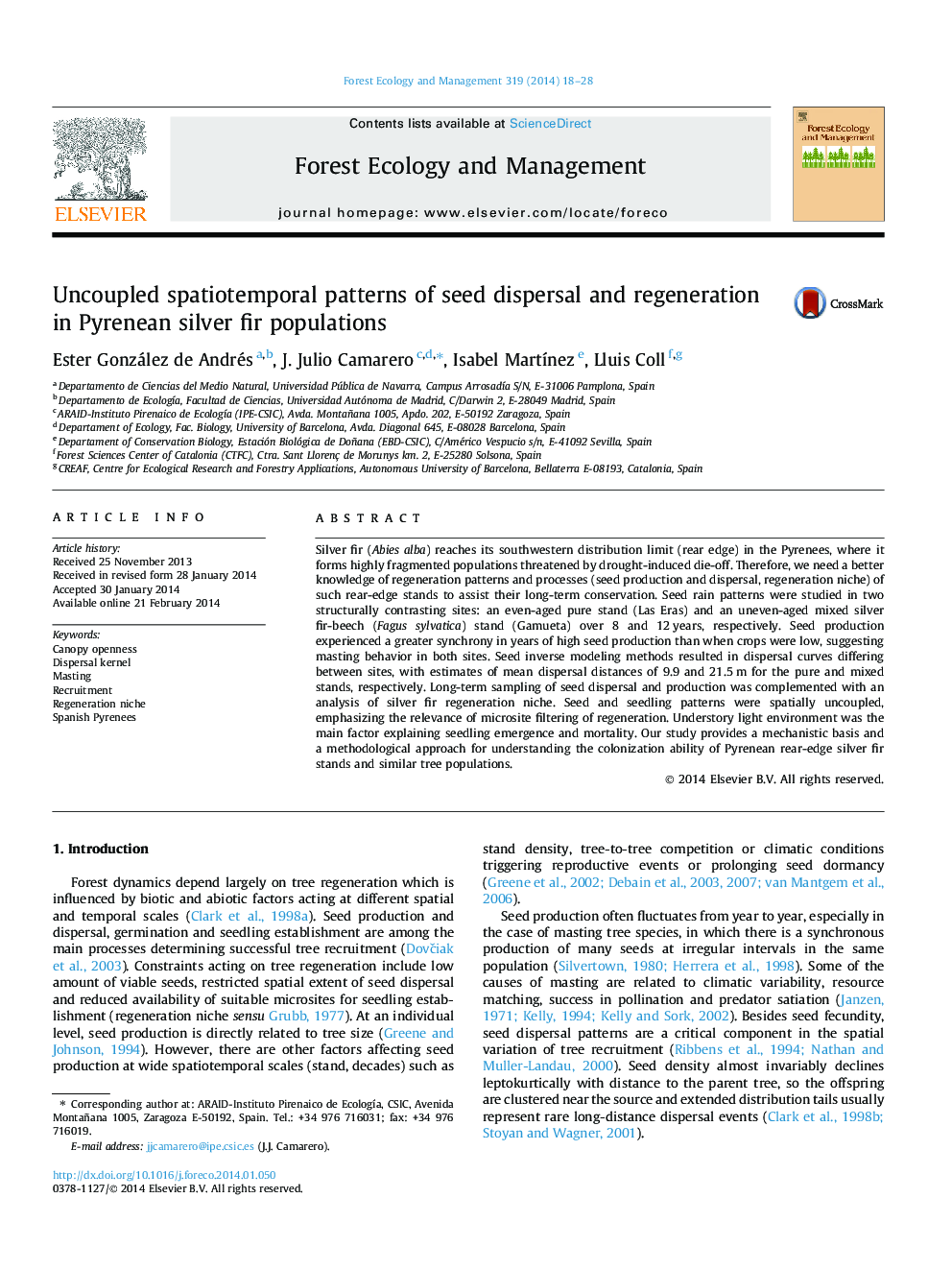| کد مقاله | کد نشریه | سال انتشار | مقاله انگلیسی | نسخه تمام متن |
|---|---|---|---|---|
| 86648 | 159202 | 2014 | 11 صفحه PDF | دانلود رایگان |
• Silver-fir regeneration was assessed in two structurally contrasting Pyrenean sites.
• The uneven-aged mixed and the even-aged pure stands show seed masting.
• Inverse models estimated different seed dispersal distances for each stand type.
• Seed and seedling spatial patterns were spatially uncoupled.
• Understory light was the main factor explaining silver-fir recruitment.
Silver fir (Abies alba) reaches its southwestern distribution limit (rear edge) in the Pyrenees, where it forms highly fragmented populations threatened by drought-induced die-off. Therefore, we need a better knowledge of regeneration patterns and processes (seed production and dispersal, regeneration niche) of such rear-edge stands to assist their long-term conservation. Seed rain patterns were studied in two structurally contrasting sites: an even-aged pure stand (Las Eras) and an uneven-aged mixed silver fir-beech (Fagus sylvatica) stand (Gamueta) over 8 and 12 years, respectively. Seed production experienced a greater synchrony in years of high seed production than when crops were low, suggesting masting behavior in both sites. Seed inverse modeling methods resulted in dispersal curves differing between sites, with estimates of mean dispersal distances of 9.9 and 21.5 m for the pure and mixed stands, respectively. Long-term sampling of seed dispersal and production was complemented with an analysis of silver fir regeneration niche. Seed and seedling patterns were spatially uncoupled, emphasizing the relevance of microsite filtering of regeneration. Understory light environment was the main factor explaining seedling emergence and mortality. Our study provides a mechanistic basis and a methodological approach for understanding the colonization ability of Pyrenean rear-edge silver fir stands and similar tree populations.
Stand structure determines contrasting dispersal kernels in Pyrenean Abies alba populations.Figure optionsDownload as PowerPoint slide
Journal: Forest Ecology and Management - Volume 319, 1 May 2014, Pages 18–28
